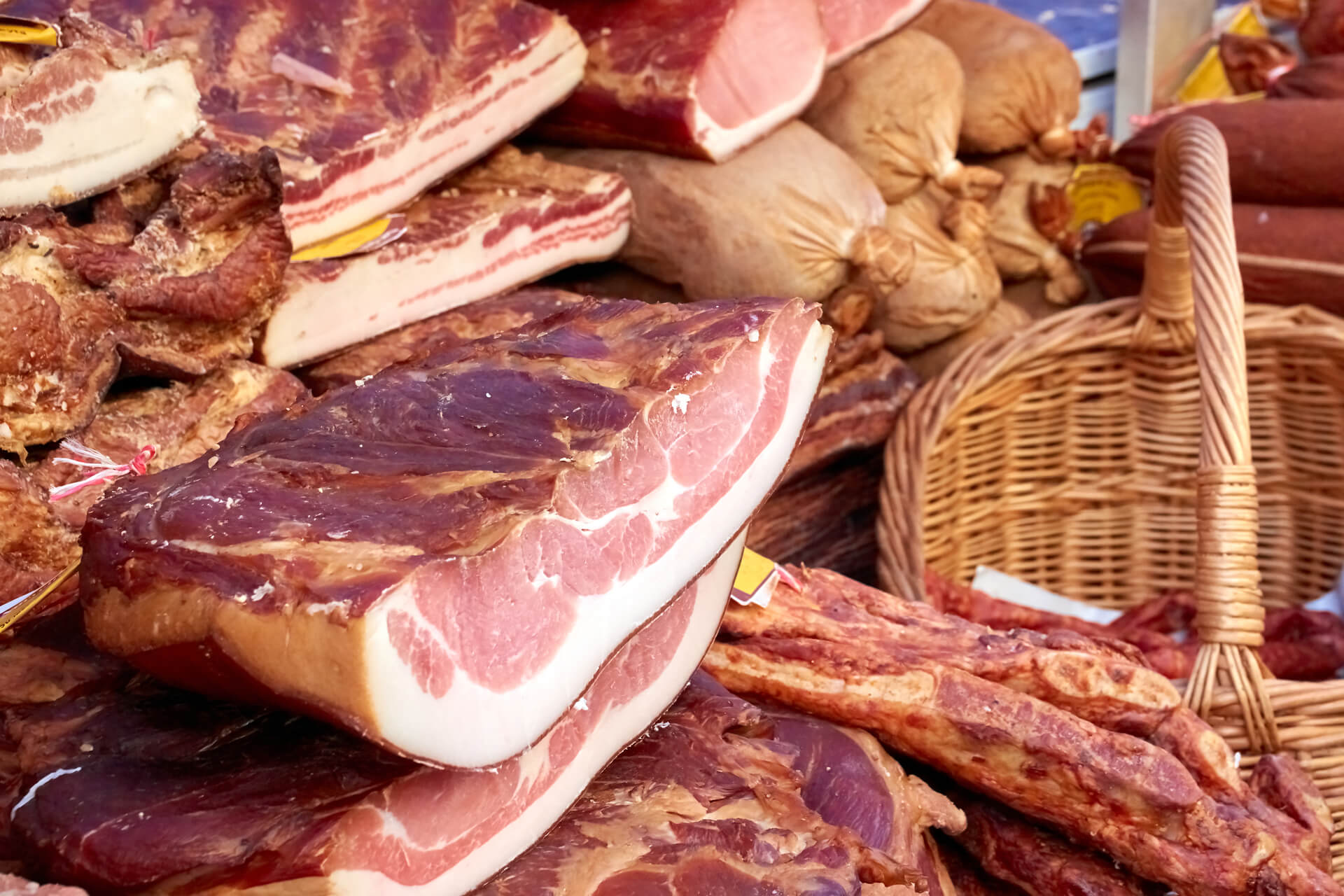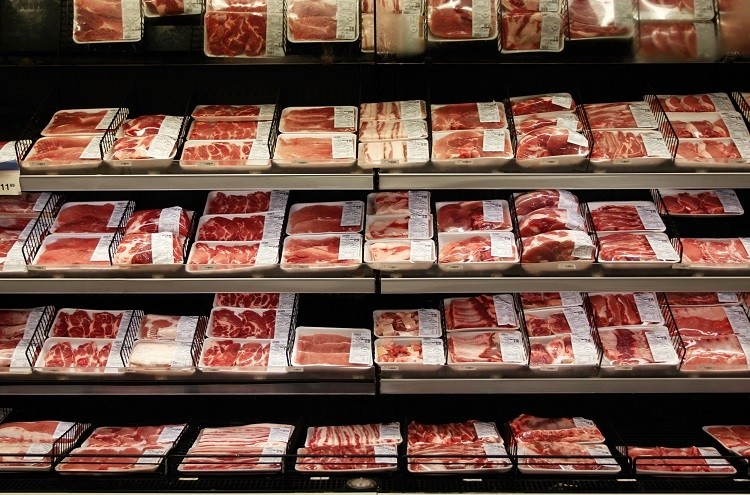Go To Bagley Farms Meat Market Edwardsville IL for Farm-Fresh Meat and Specialized Cuts
Discover the Art of the Butcher's Cut in a Modern Meat Market
In the ever-evolving landscape of modern-day meat markets, the butcher's cut has transcended its typical origins, combining age-old craftsmanship with modern methods. Today's butchers are not simply cpus of meat; they are knowledgeable craftsmens who emphasize sustainability and honest sourcing. Their competence in picking and preparing cuts customized to certain cooking needs provides an unmatched eating experience. Yet, what really sets the modern butcher apart is their capability to build a much deeper link between consumers and the origins of their meat. Just how do these masters equilibrium custom with technology, and what ramifications does this have for the future of meat consumption?
Evolution of Butchery Strategies
The evolution of butchery techniques reflects an abundant tapestry of technology and adaptation driven by advancements in innovation, changes in customer need, and a much deeper understanding of meat science. Historically, butchery was a craft passed down through generations, with techniques sharpened over centuries to make best use of return and taste. Nonetheless, the industrial change ushered in automation, transforming standard methods and allowing massive handling.
The mid-20th century saw butchery techniques additionally refined by scientific understandings into muscle mass biology and meat aging, boosting both tenderness and taste. Technologies like vacuum packaging and refrigeration prolonged item shelf-life, allowing butchers to expand offerings and boost quality control. This period additionally marked the surge of customized tools, such as band saws and meat slicers, which raised accuracy and effectiveness in meat processing.

Digital systems currently aid in monitoring animal provenance and enhancing cuts to fulfill specific consumer preferences. Furthermore, a resurgence in artisanal butchery has actually arised, blending traditional skills with modern-day understanding to provide to customers looking for ethical and lasting meat alternatives.
Comprehending Meat Cuts
Understanding the ins and outs of meat cuts is vital for both butchers and consumers seeking top quality and value. Each cut comes from a different component of the pet, giving distinct tastes, appearances, and cooking approaches - bagley farms meat market edwardsville il. Mastery of these distinctions not only improves culinary experiences however additionally makes best use of the utility of each carcass. For butchers, exact cuts show skill and regard for the craft, ensuring minimal waste and optimal return.

Comprehending muscle make-up is vital; muscle mass used a lot more frequently by the animal tend to be harder and are best suited for slow-moving cooking approaches, while less-used muscle mass, like those found in the loin, are a lot more tender and suitable for grilling or roasting. Knowledge with these distinctions equips consumers to make educated choices, improving their cooking ventures.
Choosing Quality Meat
Selecting the appropriate meat involves more than just choosing an aesthetically appealing item from the screen. The art of picking top quality meat requires a discerning eye and knowledge of certain features that signify freshness and excellence.
Secondly, consider the marbling, which refers to the white flecks of fat within the muscle mass. Proper marbling is a key indicator reference of tenderness and flavor, as it melts during cooking, enhancing the meat's juiciness. Remember, higher marbling commonly associates with superior high quality cuts, such as USDA Prime.
Structure is one more vital aspect; meat must feel solid to the touch, not slimy or overly soft. Additionally, be conscious of the aroma. Fresh meat needs to have a tidy, neutral odor, complimentary from any type of sour or off-putting smells.
Coupling Cuts With Food Preparation Techniques

On the other hand, tougher cuts like brisket and chuck roast are abundant in collagen, which damages down right into gelatin when prepared slowly. These cuts are perfect for braising or slow roasting, enabling the meat to soften in time and create deep, complicated flavors. Cuts such as brief ribs and pork shoulder make out well with slow-cooking methods, where expanded cooking times transform their durable structures right into succulent dishes.
Lamb shanks and oxtail, which call for long term food preparation to tenderize, are ideal prospects for cooking or slow simmering. These approaches coax out rich, passionate tastes while preserving dampness. By comprehending the unique features of each cut, chefs and home chefs alike can elevate their culinary productions, making sure each meal is both satisfying and memorable.
The Butcher's Function Today
Navigating the evolving landscape useful content of the modern-day meat market, the butcher's role today prolongs past plain preparation of cuts. Contemporary butchers are culinary artisans, educators, and supporters for sustainable practices. They bridge the space in between the ranch and the fork by ensuring honest sourcing, comprehending animal husbandry, and prioritizing openness in the supply chain. This change mirrors the expanding consumer demand for top quality over amount, where provenance and pet well-being are critical.
Along with crafting exact cuts, butchers now involve directly with customers, using cooking suggestions and tailoring choices to suit private needs and choices. get redirected here Their experience in meat aging, marbling, and flavor profiles empowers consumers to make educated choices, enhancing their culinary experiences. This personalized solution exhibits the butcher's progressing role as a relied on expert in the kitchen.
Additionally, butchers are critical in lessening waste, using whole animals to create diverse items such as sausages and supplies. This thorough strategy not just values the animal but also straightens with modern sustainability goals. This way, the contemporary butcher symbolizes both tradition and development, adjusting to an ever-changing market while protecting the artistry and honesty of their craft.
Conclusion
Proficiency in comprehending diverse meat cuts and quality signs equips butchers to provide enlightened recommendations, lining up details cuts with optimal food preparation techniques. By recognizing historical methods while welcoming contemporary demands, the butcher's duty remains essential in today's sophisticated meat market.